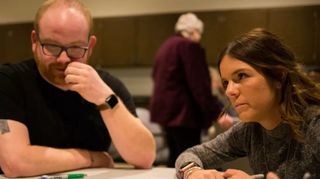Tech and Learning Managing Editor Ray Bendici spoke with instructional designer Jennifer Sackoff about virtual professional development plans at the University of Missouri Kansas City.
Where: University of Missouri Kansas City
Who: Jennifer Sackhoff, Instructional Designer III
In mid-March, the decision was made at the University of Missouri Kansas City (UMKC) to move all students to remote learning. The decision required a rapid transition that presented unprecedented -- but not insurmountable -- challenges for educators.
Some faculty were already familiar with remote teaching tools and practices, but UMKC put together a three-week virtual professional development program comprising three training sessions per week, plus recorded sessions and on-demand lessons. The institution already had in place a faculty certification course for anyone who teaches online, which was built out to accommodate the new remote learning demands.
The majority of instructors tried to do as much asynchronous teaching as possible. It got good feedback because it was less burdensome and more flexible. Overall, remote teaching had a wide range of acceptance with instructors, with some onboard quickly while others struggled.
The UMKC Provost is currently asking faculty to take PD classes for fall and although the plan is to return to campus in fall, to be prepared to teach remotely again.
The institution has been creating its own PD resources and workshops that focus on remote teaching methods, online teaching presence, communication, scheduling, setting expectations, and engagement with faculty and other students. Sessions are specifically tailored to the products and platforms being used by the institution, such as how to use Canvas or Panopto. Sessions focus on the basic aspects of a tool, and then how to use it for remote teaching. For example, a session may revolve around how to take a one-hour lecture and turn it into a 10-minute video for students. Some departments have showcased tech early adopters, and some are going through it together.
Part of the challenge has been trying to curtail the bad practices that come with inexperience, such as well-meaning instructors trying to use Zoom to proctor an exam. In this case, the institution needed to find other solutions, which sometimes come with big learning curves and are not always user-friendly. Overall, they’ve been trying to discourage proctoring as much as possible, and raising awareness of struggles.
UMKC is also in the process of going under the University of Missouri system, which already has an office of elearning. During the shift to a new system, there will be a learning curve in tasks such as determining new responsibilities, and creating and vetting training sessions. It will also be critical to ensure that resources and support tools are available.
This summer, UMKC is planning on offering either an eight-week term or two five-week terms for summer. Anyone interested in teaching summer online has to go through the faculty certification program.
“Ultimately, our primary responsibility is to help faculty to bring classes to an online environment,” says Sackhoff.

